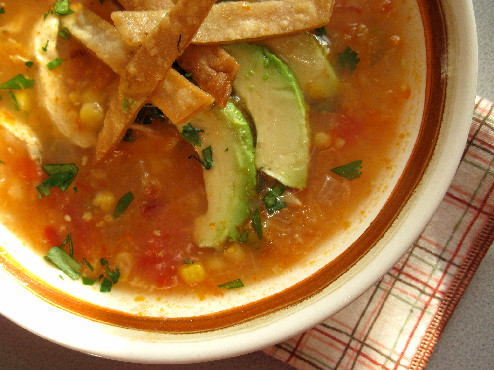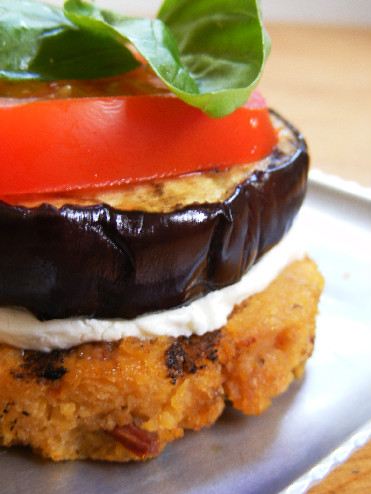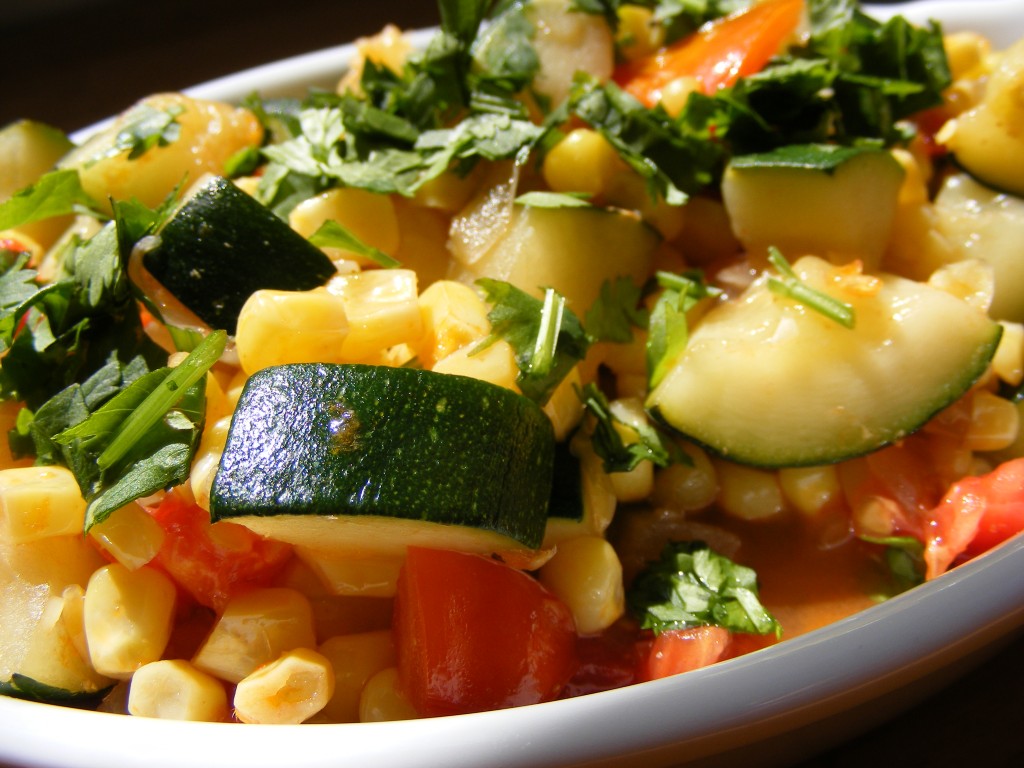Chicken Soup: Easy Mexican Chicken Tortilla Soup
Saturday, January 29th, 2011This time of year my brown skin gets pasty. Shorter days, I’m outside less and bundled up in layers. I usually escape the winter blues on a beach in Mexico. The last few years it’s been in the Yucatan, mostly around Playa del Carmen.
Four to five lazy days at the beach is some serious R&R with no full agenda. We only take in two or three cultural or historical sites like Chitchen Itza (inland Mayan ruins), Tulum (the beachside ruins) or Coba (more ruins in a jungle setting) because the purpose of these trips is soaking in the natural beauty and chillin’ – sleeping in, long walks along the beach, and swimming/dipping in pristine waters.
During the day, when the sun is blazing we grub on fish tacos or ceviche and swig down a few cold cervezas. Once the sun has set and the coastal winds pick up, hot soup is more inviting. A bowl of chicken tortilla soup is the perfect appetizer or main course for a soup lover like me.
Over the years, I’ve eaten so many versions of tortilla soup I can’t count. Some had cream, others were thick, and some were so skimpy it was more like consume.
I made this chicken tortilla soup the other night needing some comfort food after a long day at the gig and a single-digit day in Denver. Since I’ve been hobbling about in this medical boot, I come home tired and famished, craving something to assuage the hunger and physical discomfort.
This is one of the best tortilla soups I’ve had. My husband says it’s moved to his list of favorites – it’s that good. It’s easy to make and layered with flavor. This is a smoky version that does not require roasting or dry toasting chiles – only a little jalapeno and chipotle – staples in my kitchen.
Whether you’re at the beach, in the mountains or in the city, I encourage you to try this one. As for me, I doubt I’ll get to beach it this winter, but, at least I have a damn good bowl of tortilla soup.











